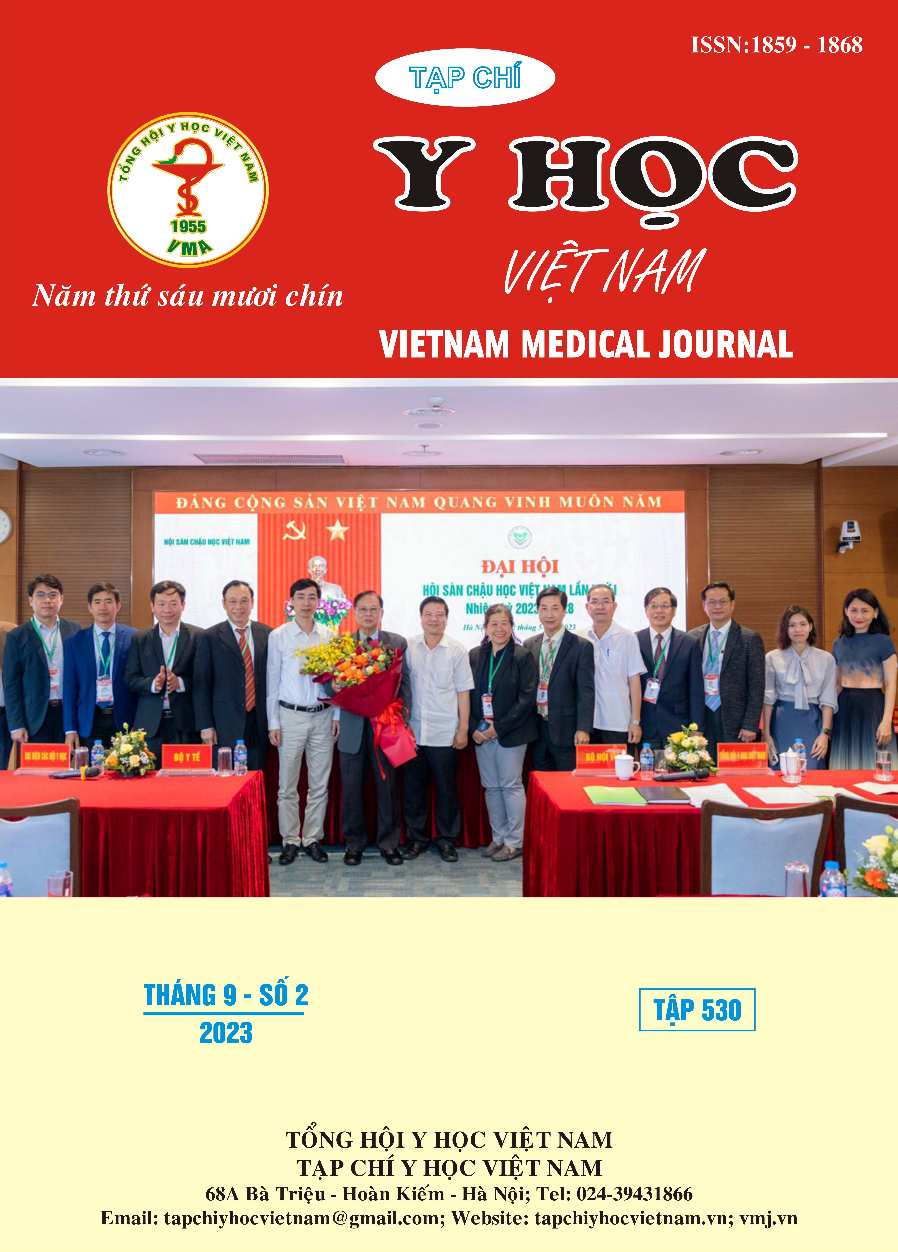SEROLOGICAL RESPONSE TO TOXOCARA CANIS AMONG PATIENTS WITH CHRONIC URTICARIA AT THE UNIVERSITY MEDICAL CENTER AT HO CHI MINH CITY IN 2022 – 2023
Main Article Content
Abstract
Objectives: To determine the prevalence of positive serological response to Toxocara canis (T.canis) among chronic spontaneous urticaria (CSU) patients by using ELISA. Materials and methods: A cross – sectional study was conducted in 107 patients with chronic spontaneous urticarial at the University Medical Center Ho Chi Minh City from 11/2022 to 5/2023. Results: The prevalence of CSU patients with positive T.canis serological response was 23,4%. Mean age of the study subjects was 36.76 ± 11.39 years. The mean duration of urticaria in the positive and negative T.canis serological response groups was 10.72 ± 12.8 months and 12.67 ± 19.57 months, respectively (p = 0,75). The clinical characteristics of CSU patient with positive T.canis serological response were fatigue, weight loss, abdominal pain and headache. The mean blood eosinophil counts and the mean serum total IgE levels were not significantly different between T.canis serological positive (0,21 ± 0,22.109/L and 595,4 ± 958,6 IU/ml) and negavive groups (0,22 ± 0,18.109/L and 261,8 ± 436,9 IU/ml) (p > 0.05). The prevalence of several factors between positive and negative T.canis groups were having dogs at home 60% and 32.9%, soil contacting 40% and 19.5%, periodic deworming 12% and 40.2%, and eating raw vegetables 100% and 78% (p < 0.05). Conclusion: The prevalence of positive T.canis serological response among patient with CSU was 23.4%. Clinical characteristics were not significantly different between positive and negative T.canis serological reponse groups.
Article Details
Keywords
: blood eosinophil counts, clinical characteristics, ELISA, risk factors, serological response, serum total IgE levels, Toxocara canis (T.canis).
References
2. Trương Trung Hiếu. Nghiên cứu tình hình nhiễm Toxocara canis trên bệnh nhân nổi mày đay tại bệnh viện Đại học Y dược thành phố Cần Thơ năm 2014-2015. Luận văn tốt nghiệp Y khoa, Trường Đại học Y Dược Cần Thơ, 2015.
3. Burak-Selek Mehmet, Baylan Orhan, Kutlu Ali, Özyurt Mustafa Iranian. Toxocara canis IgG seropositivity in patients with chronic urticaria. Journal of Allergy, Asthma, Immunology. 2015; 450-456.
4. De Martinis M, Sirufo MM, Suppa M, Di Silvestre D, Ginaldi L. Sex and Gender Aspects for Patient Stratification in Allergy Prevention and Treatment. International Journal of Molecular Sciences. 2020; 21(4):1535.
5. Nguyen Thi Ngoc Phuong, Truong Tan Trung, Pham Hong Ha, et al. Prevalence of Toxocara spp. infection: Investigate from the Thong Nhat Dong Nai general hospital from 2019 - 2020. American journal of sciences and engineering research. 2021.
6. Lê Đình Vĩnh Phúc. Nghiên cứu đặc điểm lâm sàng, cận lâm sàng và kết quả điều trị bằng thiabendazole trên người mắc bệnh ấu trùng giun đũa chó, mèo tại trung tâm Medic Thành phố Hồ Chí Minh (2017 – 2019). Luận án Tiến sĩ, Viện sốt rét – Ký sinh trùng – Côn trùng Trung ương. 2021.
7. Nguyễn Thị Thanh Quân, Nguyễn Thị Hải Yến, Phạm Quốc Khánh. Nghiên cứu tình hình nhiễm và yếu tố liên quan đến nhiễm Toxocara canis, Strongyloides stercoralis, Echinococcus ở bệnh nhân nổi mày đay tại bệnh viện chuyên khoa tâm thần và da liễu tỉnh Hậu Giang năm 2019-2020. Tạp chí Y dược học Cần Thơ. 2020, số 32.
8. Stear M, Preston S, Piedrafita D, Donskow-Łysoniewska K. The Immune Response to Nematode Infection. International Journal of Molecular Sciences. 2023 Jan 23;24(3): 2283.


